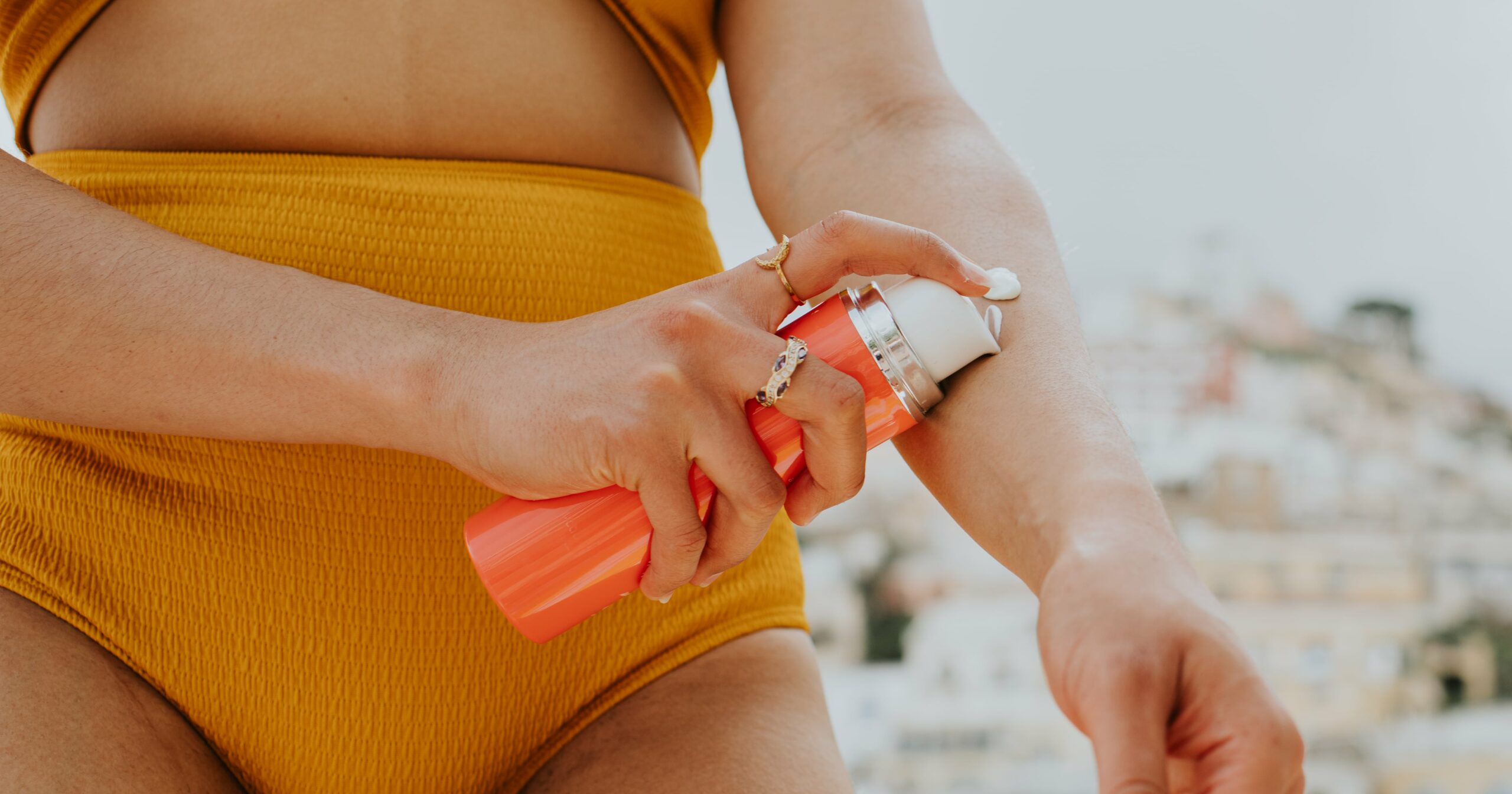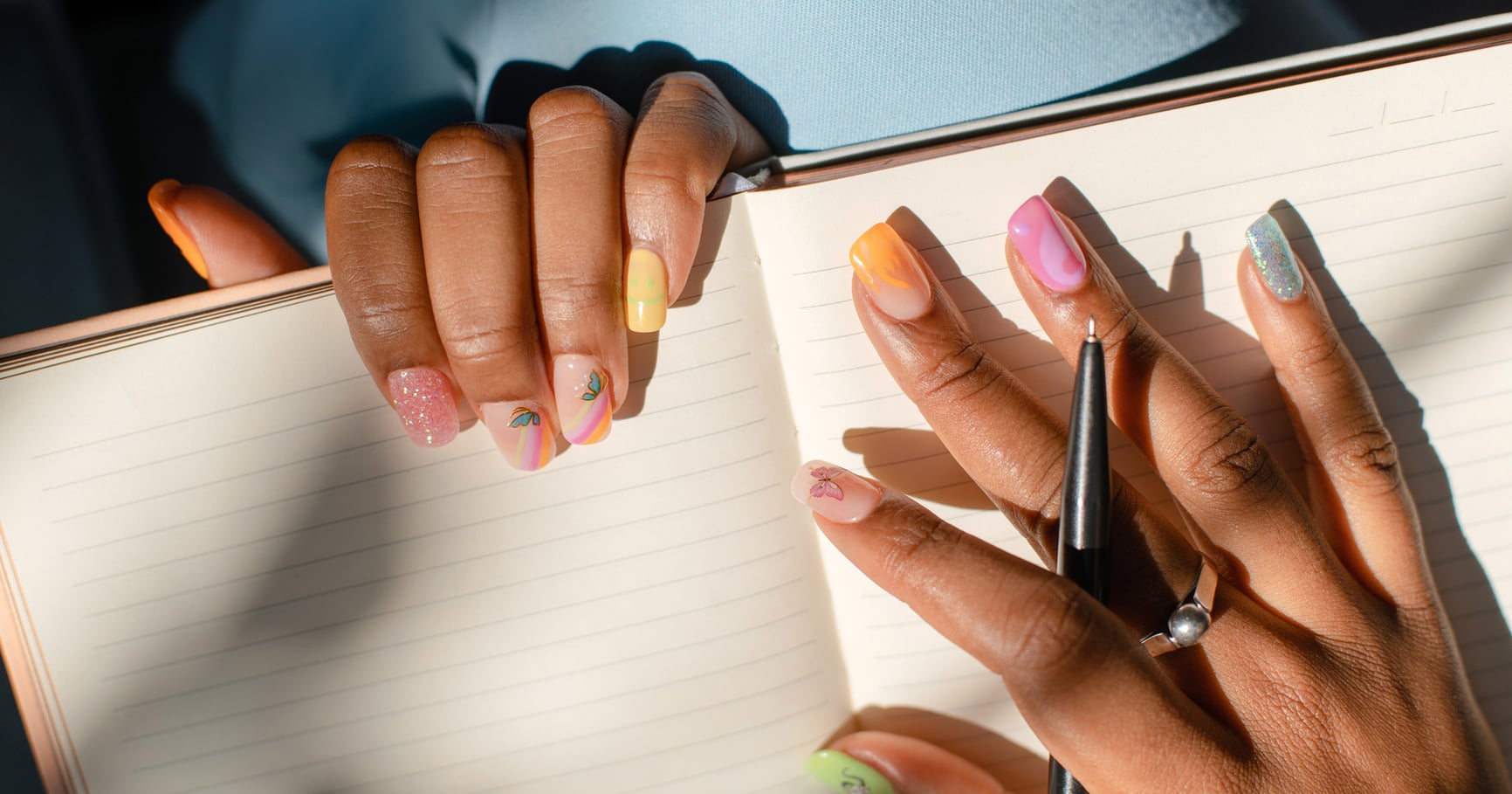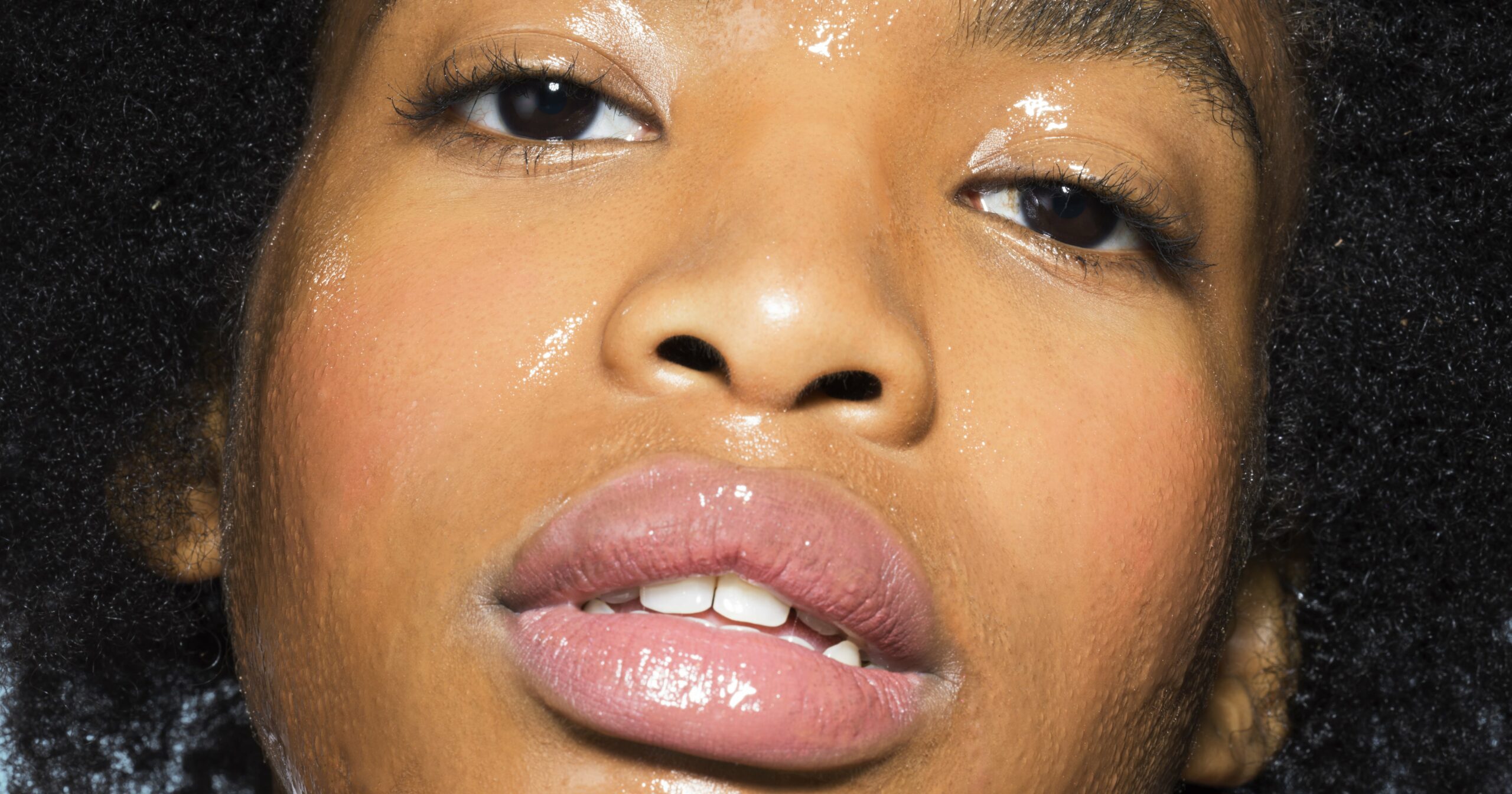Ask any dermatologist to name the one skin-care step that should be nonnegotiable in your routine, and you better believe that each and every one of them will say sunscreen. That’s because in addition to protecting skin against skin cancer – of which, by the way, the most common types (basal and squamous) impact 5.4 million Americans each year, according to the American Cancer Society – it’s also your first line of defense against a whole host of other skin concerns like wrinkles, dullness, and discoloration.
Yet, despite how critically important sunscreen is to the overall health of your skin, it’s reported that a third of Americans still don’t wear it every day, and we don’t want you to be one of them. To help you navigate the wild world of sunscreen – and to understand just how critical it is to wear it 365 days a year – we chatted with dermatologists to give you the ultimate guide to SPF.
How Does Sunscreen Work?
The sun emits two different types of ultraviolet (UV) rays, each of which have a different impact on your skin. The first type is UVA rays (which you can remember as UV “aging” rays); these have longer wavelengths and penetrate the skin more deeply, breaking down collagen and elastin and contributing to visible signs of skin aging. The second are UVB rays (or UV “burning” rays), which damage the DNA in the top layer of skin and cause sunburns. In addition to these more visible effects, exposure to both types of rays can up your risk of skin cancer, including melanoma.
Just because you can’t see the sun when the weather is cloudy, rainy, or snowy, it doesn’t mean your skin isn’t feeling its effects – which is why it’s critically important to apply the stuff every single morning, all year long.
“Sunscreen should be used every single day, regardless of the weather,” Rebecca Marcus, MD, a board-certified dermatologist based in Dallas, tells POPSUGAR. “Wearing sunscreen every day significantly reduces your risk of developing skin cancer. It also helps to minimize and delay photoaging, which manifests as dark spots and [textural] changes, including roughness, fine lines, and wrinkles.”
How Often Should You Reapply Sunscreen?
“The best way to use sunscreen is regularly and consistently. It’s really critical to use it any time you have sun exposure – which, for most, is daily,” says David Kim, MD, a board-certified dermatologist at Idriss Dermatology in New York City. “Rather than thinking of it as something to match the weather, I recommend building it into a normal skin-care regimen then specifically reapplying when spending deliberate time in the sun or outside.”
According to dermatologists, the best time of day to apply sunscreen is first thing in the morning, as the last step of your skin-care routine and before you put on your makeup.
If you want to know how much sunscreen to use on your face and neck, dermatologists recommend using one quarter of a teaspoon – or two finger lengths – of product. For your body, an ounce (or about the amount it would take to fill up a standard shot glass) should suffice.
But how long does sunscreen last, you ask? In general, it’s best to reapply sunscreen every two hours, especially if you’re outdoors. But if you’re swimming or sweating, you’ll want to up your frequency of reapplication.
Different Types of Sunscreen You Can Buy
We’re currently living in the golden age of sunscreen, with so many options on the market that there’s really no excuse not to apply (and reapply) regularly. These days, you can find everything from SPF-infused setting sprays that you can spritz on top of your makeup to tinted, glow-inducing formulas that may just make you skip the makeup altogether.
Though there are thousands of different forms to choose from, they all fall into two main categories: chemical or mineral. Each has its own benefits, and there are a few different factors that come into play when it comes to deciding which is best for you.
Chemical Sunscreens
Chemical sunscreens contain chemical ingredients that are meant to absorb UV rays, convert them to heat, and release them from the skin before they can cause any damage. Some of these ingredients you’ll see on the label include avobenzone, octisalate, and octocrylene.
Chemical formulas tend to be sheer, meaning they won’t leave behind any sort of white cast on your skin, but they may be irritating for certain skin types.
Mineral Sunscreens
Otherwise known as “physical sunscreens,” mineral formulas use ingredients like zinc and titanium dioxide to physically block UV rays from penetrating your skin. “They work by reflecting and scattering the UV rays from the skin surface,” says Marisa Garshick, MD, a board-certified dermatologist in New York City.
By nature, these types of sunblocks tend to be thick and leave behind a white cast (though it’s worth noting that in recent years, formulas have gotten a whole lot better and more sheer). In spite of this, they’re still the top choice for dermatologists. “They work immediately with application, provide broad-spectrum protection [meaning they defend against both UVA and UVB rays], and are my preferred type of sunscreen,” says Daniel Butler, MD, a board-certified dermatologist in Arizona. “Chemical sunscreens certainly have a place, but when compared, non-nano mineral sunscreens are the gold standard.”
Additionally, mineral sunscreens tend to cause less irritation than their chemical counterparts, making them more appealing to those with sensitive skin. But is sunscreen safe when pregnant? Mineral formulations are approved for pregnancy and breastfeeding, according to the doctors. Plus, they offer protection from the blue light that’s emitted from screens, which makes them a great pick for days when you aren’t spending tons of time outside but still may be exposed to UV rays.
How to Choose Between Mineral vs. Physical Sunscreen
Though dermatologists slightly prefer mineral formulas, the best sunscreen for you is ultimately going to be the one you can commit to wearing every day. “The best way to decide is to try a variety of formulas containing broad-spectrum SPF, and see which one works best for you,” Dr. Marcus says. “Though those with sensitive skin may prefer mineral sunscreens, darker skin tones may do better with chemical sunscreens that are better absorbed and don’t tend to leave a white cast.”
Decoding Your Sunscreen Bottles
When it comes time to shop for sunscreen, you’ll want to know exactly what you’re investing in – which means understanding the language that’s used on the bottles to clue you in on just how much protection a product is offering.
What Does SPF Mean?
SPF stands for “sun protection factor” and is meant to tell you how well a formula can protect against UV rays. According to the FDA, “SPF is a measure of how much solar energy (UV radiation) is required to produce sunburn on protected skin (i.e., in the presence of sunscreen) relative to the amount of solar energy required to produce sunburn on unprotected skin. As the SPF value increases, sunburn protection increases.”
So, for example, SPF 30 blocks out 97 percent of UVB rays, while SPF 50 blocks out around 98 percent. In general, dermatologists recommend choosing a product with at least SPF 30 for daily use. “Practically speaking, it is a measure of the time that it takes to make the skin red when wearing sunscreen compared to the amount of time required to develop a sunburn without wearing sunscreen,” Dr. Garshick says.
“It’s important to remember to apply enough sunscreen in order to receive the amount of protection as indicated on the label – for this reason, if you don’t apply enough sunscreen, you may not get the full benefit for SPF 30, which is why some people advocate for using a higher SPF value,” Dr. Garshick says. “That said, it is also important to not have a false sense of security when using higher SPFs and believe that you can go longer without reapplying.”
She adds that ultimately, as long as you are applying the proper amount of product and reapplying every two hours, SPF 30 (or higher) should be perfect.
What Does Broad-Spectrum Mean?
Simply put, a “broad-spectrum” formula protects against both UVA and UVB rays. “This is important because UVA and UVB have different negative effects on the skin,” Dr. Marcus says, so seeing this term on the bottle should be table stakes for whatever you choose to buy.
What Does PA +++ Mean?
While SPF is the most well-known sunscreen term, it only clues you into how well a formula protects against UVB rays. To know how well the product blocks against UVA rays, you need to consult the PA rating, which stands for “protection grade of UVA,” Dr. Marcus says.
According to Dr. Garshick, a rating of PA +++ or PA ++++ tends to be good. However, the US doesn’t require that brands put a PA rating on their products, so if the sunscreen you’re considering doesn’t have this on its label, you’ll need to rely on “broad-spectrum” language to confirm that the formula defends against both types of UV damage.
What Does Water-Resistant Mean?
“‘Water-resistant’ refers to the amount of time that can be spent in water that the sunscreen will still be effective,” Dr. Garshick says. “The label may indicate 40 or 80 minutes, which means sunscreen should be reapplied after spending this amount of time exposed to water, whether swimming or sweating.”
With that in mind, there’s no such thing as “waterproof” sunscreen because all sunscreens eventually wash off in water, and the US Food and Drug Administration (FDA) has banned the use of this term on product labeling in the US.
What Does Reef-Safe Mean?
“Reef-safe” has become a buzzy term in the sunscreen world of late, as certain sunscreen ingredients have been shown to be harmful to coral reefs (oxybenzone and octinoxate, for example, are banned in Hawaii and Key West, FL). However, “it’s important to know that reef-safe doesn’t have a formally agreed-upon definition,” Dr. Garshick says. “A recent review suggests that there is limited evidence to suggest that corals are negatively impacted by exposure to UV filters and that more data is needed to better quantify the risk in real-world conditions.”
Shop Dermatologists’ Favorite Sunscreens
“The Andalou Naturals Deep Hydration Daily Shade + Blue Light Defense SPF 30 ($19) contains zinc oxide and provides broad-spectrum UVA and UVB coverage while also protecting against blue light and pollution,” Dr. Garshick says. “It also contains hyaluronic acid and bio-designed collagen to help boost moisture, helping to hydrate and plump the skin, and won’t leave a white cast behind.”
“My favorite sunscreen is True Botanicals Skin Barrier Sun Shield SPF 30 ($65),” Dr. Butler says. “It’s great for daily use as part of a facial skin-care regimen with its broad-spectrum protection and added chebula antioxidant for protection and correction.”
“The Charlotte Tilbury Invisible UV Flawless Primer With SPF 50 ($55) protects the skin by providing SPF 50 broad-spectrum coverage, and it uses Citystem, a botanical extract complex that defends against urban pollution,” Dr. Marcus says. “It also contains hyaluronic acid and aloe vera to hydrate and nourish the skin. The smoothing, blurring polymers help reduce the appearance of fine lines and pores and makes it easy to apply under makeup.”
“Offering SPF 50 broad-spectrum coverage, the La Roche Posay Anthelios UV Hydra ($40) can be used by all skin types, including those with dry skin,” Dr. Garshick says. “It contains hyaluronic acid to also boost hydration while also blending easily to leave behind a dewy finish. It also contains the Cell-Ox B3 Shield Technology, which, in addition to providing protection against UVA and UVB, also offers antioxidant protection.”
“The Blue Lizard Sensitive Mineral Sunscreen ($20) is a favorite body sunscreen of mine, and I use this for myself and for my children. I find this formula to be easier to spread than many other mineral-based sunscreens,” Dr. Marcus says.
“Using a 100 percent micronized zinc oxide, the BeautyPie Traceless Mineral SPF 30 ($60) offers SPF 30 broad-spectrum coverage,” Dr. Garshick says. “It’s easy to apply and won’t leave behind a white cast or greasy finish. It also soothes and nourishes the skin using argan oil and niacinamide and offers antioxidant protection using the Indian beech seed extract.”
“The LightSaver Activated Mineral Sunscreen SPF 33 ($45) is an activated mineral sunscreen with non-nano zinc oxide and a proprietary Light Activated Repair Complex (LARC) that provides broad-spectrum protection,” says Dr. Kim, who founded the brand. “LARC is a special blend of photolyase, niacinamide, squalane, and lingonberry. It’s the ultimate multitasker, designed to help repair signs of sun damage, brighten, moisturize, and help provide blue-light protection.”
“Providing broad-spectrum coverage, the Neutrogena PureScreen Mineral UltraSheer Dry Touch Lotion ($10) uses zinc oxide and titanium dioxide, making it a great option for all skin types,” Dr. Garshick says. “It also incorporates vitamin E and uses Dry-Touch Technology so it leaves the skin feeling soft and smooth and without feeling greasy.”
If you’re on the hunt for more recommendations, check out our list of the best face and body sunscreens.




